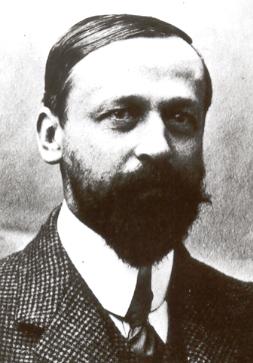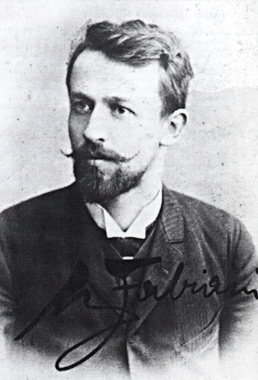MAX FABIANI
Twelfth of fourteen children was born in Cobidil on April 29, 1865, a small town near San Daniele del Carso, son of Antonio Fabiani, a landowner from Paularo of Bergamo origin and by Charlotte von Kofler, an aristocratic from Trieste of Tyrolean origins. He was educated in a perfectly trilingual environment: in addition to Italian he also learned Slovenian and German.
After attending elementary schools in San Daniele del Carso, where he showed great interest in mathematics, it was decided to continue scientific studies at the Lealschule in Ljubljana. He then continued his studies at the Technische Hochschule in Vienna, where he studied architecture between 1883 and 1884. After graduating (1889), he obtained a scholarship which gave him the opportunity to visit Asia Minor and almost the entire Europe between 1892 and 1894.
Back in Austria, he started working with Otto Wagner. He designed some important works in Vienna (such as Urania) and in Trieste (Narodni dom). After the Ljubljana earthquake of 1895, Fabiani designed some of the most important works in the reconstruction of the city (Krisper House, Kleinmaier House); he was also the author of the master plan that sanctioned the most significant features of Ljubljana's urban development until the first post-war period.
After the First World War he moved to Gorizia, where he collaborated, with the drafting of the general plan of 1921, in the reconstruction of the city seriously damaged by the war, the assignment of this assignment was initially very troubled as the key role for large orders was very coveted and rumors were spread about his pro-Slovenian closeness, rumors that Fabiani himself denied.
In the thirties and forties he moved to the birthplace of San Daniele del Carso, of which he became podestà and he worked on the restructuring of the fortifications of the village as well as continuing his activity as an architect committed to designing monumental works during Fascism.
During the Second World War in his role of podestà he tried to save the village of San Daniele del Carso by taking advantage of a distant Viennese episode during which he had Adolf Hitler work at his studio as a draftsman. The expedient worked until it had to do with German troops, but its efforts were in vain with the arrival of the People's Liberation Army of Yugoslavia which put the entire guilty village of collaboration on fire.
In 1952 he was proposed by the then President of the Council of Ministers of the Italian Republic Alcide de Gasperi to the position of Senator for life to the President of the Republic Luigi Einaudi, but Fabiani declined the offer even though he was declared "immensely grateful" because of his old age. He died in Gorizia in 1962 at the age of 97.
Fabiani made his debut in his first period of activity with a style of mediation, almost always trying to combine elements of the great Italian Baroque and the fished forms of antiquity with the most modern construction elements, strictly respecting the classic proportions. An example of this research is the "Kleinmayr palace" in Ljubljana where the architect tries to blend the heavy and austere lines of the classic Austrian style with the sinuous baroque forms of Borromini. It can be said that for Fabiani, respect for the genius loci (the character of the place, of the city) remained categorical throughout his work. The city of Trieste in fact sees the absence of any baroque form in favor of a strong liberty imprint, as can be seen in the "Casa Bartoli".










